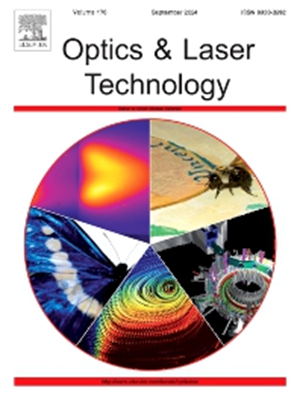Resolution enhancement of light field displays using a polarization-dependent virtual-moving liquid crystalline polymer-lenticular lens array with rapid switching operation
IF 4.6
2区 物理与天体物理
Q1 OPTICS
引用次数: 0
Abstract
We propose an effective method to enhance resolution in light field (LF) three-dimensional (3D) displays using a virtual-moving liquid crystalline polymer-lenticular lens array (LCP-LLA) combined with a time-sequential polarization control scheme and rapid lateral switching of periodic focusing operations. The virtual-moving LCP-LLA is custom-fabricated by stacking two LCP-LLAs with a half sub-pixel pitch offset, enabling a time-sequential virtual lateral shift of the focal plane. Additionally, we enhance the angular resolution of reconstructed 3D images by optimizing the lateral shifting configurations of the stacked LCP-LLAs in alignment with the sub-pixel arrangement of the display panel. These approaches notably minimize spatial resolution loss while improving angular resolution with a fixed panel configuration, based on the optical properties of the custom-designed virtual-moving LCP-LLA. Experimental validation demonstrates the efficacy of this method, achieving two-fold enhancement in angular resolution for 3D images with 20 viewpoints, without compromising spatial resolution.

求助全文
约1分钟内获得全文
求助全文
来源期刊
CiteScore
8.50
自引率
10.00%
发文量
1060
审稿时长
3.4 months
期刊介绍:
Optics & Laser Technology aims to provide a vehicle for the publication of a broad range of high quality research and review papers in those fields of scientific and engineering research appertaining to the development and application of the technology of optics and lasers. Papers describing original work in these areas are submitted to rigorous refereeing prior to acceptance for publication.
The scope of Optics & Laser Technology encompasses, but is not restricted to, the following areas:
•development in all types of lasers
•developments in optoelectronic devices and photonics
•developments in new photonics and optical concepts
•developments in conventional optics, optical instruments and components
•techniques of optical metrology, including interferometry and optical fibre sensors
•LIDAR and other non-contact optical measurement techniques, including optical methods in heat and fluid flow
•applications of lasers to materials processing, optical NDT display (including holography) and optical communication
•research and development in the field of laser safety including studies of hazards resulting from the applications of lasers (laser safety, hazards of laser fume)
•developments in optical computing and optical information processing
•developments in new optical materials
•developments in new optical characterization methods and techniques
•developments in quantum optics
•developments in light assisted micro and nanofabrication methods and techniques
•developments in nanophotonics and biophotonics
•developments in imaging processing and systems

 求助内容:
求助内容: 应助结果提醒方式:
应助结果提醒方式:


